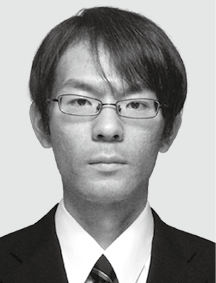Japan has set a target of 36% to 38% renewable energy capacity for FY2030 and is working on the measures needed for renewables to become a major source of electric power. While renewable generation is subject to considerable natural variability, it is anticipated that work will be needed to address the same cost-competitiveness, generation reliability, grid constraints, and capacity balancing issues that are faced by conventional large, centralized power plants. There will also be a need for reliable and cost-effective operation of generation using distributed energy resources that will include battery energy storage as well as renewables. In response, Hitachi, Ltd. is developing a distributed energy resources cooperation service that will be equipped with the core functions needed for the operation of this electricity infrastructure, including centralized control, generation plan formulation, and electricity market trading. This article gives an overview of the solution and describes its features.



As climate change and global warming become increasingly severe, there is a need to shift to a decarbonized society. In its energy policy, Japan has set a target of renewable energy making up 36% to 38% of the energy mix in FY2030. If this is to be achieved, renewable energy will need to become a major source of electric power and the design of the electricity system will need to address a number of issues if the installation of large amounts of renewable capacity is to be done sustainably. Specifically, it will be necessary to: (1) improve cost-competitiveness, (2) establish a commercial environment that supports reliable long-term generation, (3) overcome grid constraints, and (4) ensure adequate balancing capacity.
Against this background, the shift from a feed-in tariff (FIT) to a feed-in premium (FIP) regime for renewable generation and the use of thermal power generation and pumped storage hydro to provide the balancing capacity that is essential for coping with the natural variability of renewable energy are also being accompanied by progress on the adoption of next-generation technologies for carbon-free balancing capacity. Among the technologies seen as having an important role to play in providing this flexible and efficient balancing capacity are virtual power plants (VPPs) that balance supply and demand by using the Internet of Things (IoT) for integrated control of resources such as power generation equipment and battery energy storage that are spread around the community, grid batteries that help maintain the stability of the electricity grid, and power-to-gas facilities that use electricity to produce and store hydrogen. As these demand-side energy resources differ from large power plants in that they are spread across different consumers, work is having to be done to integrate them into the power system. Japan has also seen the creation of what are defined in the Electricity Business Act as “specified wholesale suppliers,” meaning electricity supply businesses that aggregate these distributed energy resources, acting as intermediaries between consumers and generation operators to control the balance of electricity supply and demand and maximize the use of demand-side energy resources.
This article describes the work Hitachi is doing on its distributed energy resources cooperation service for overcoming the operational challenges posed by these assets.
Figure 1 — Overview of Distributed Energy Resources Cooperation Service The distributed energy resources cooperation service helps make use of electricity markets and the grid in power system operation, using the Internet of Things (IoT) to consolidate and administer management systems for the distributed power system assets of electricity consumers.
The distributed energy resources cooperation service helps make use of electricity markets and the grid in power system operation, using the Internet of Things (IoT) to consolidate and administer management systems for the distributed power system assets of electricity consumers.
The distributed energy resources cooperation service is a platform that delivers services primarily for small and medium-sized operators of distributed energy, enabling them to operate and monetize these resources. It includes functions for trading on the Japan Electric Power Exchange (JEPX) and for submitting generation plans to the Organization for Cross-regional Coordination of Transmission Operators, Japan (OCCTO) by collating information on distributed sources of electricity supply and consolidating them into VPPs. Figure 1 shows some of the use cases envisaged at the time of writing for the operation of distributed energy resources on the electricity grid.
Figure 2 — Block Diagram of Distributed Energy Resources Cooperation Service Renewable energy aggregation involves functions for collating the plans and predictions of individual generation systems together with demand plans, selling or purchasing electricity on the wholesale market to deal with any excess or shortfall, and submitting generation sales plans based on the resulting sales or purchase contracts.
Renewable energy aggregation involves functions for collating the plans and predictions of individual generation systems together with demand plans, selling or purchasing electricity on the wholesale market to deal with any excess or shortfall, and submitting generation sales plans based on the resulting sales or purchase contracts.
To implement these use cases, Hitachi has set about transforming this support for distributed energy into a service that utilizes the CURSUS package it has deployed in its own electric power business and that includes functions needed to coordinate the operation of distributed energy resources with the market (see Figure 2). In FY2022, Hitachi developed a renewable energy aggregation service for FIP operators who focus on renewable energy generation (use case 6 in Figure 1). This handles the trading of renewable energy generated from multiple sites and the submission of generation plans.
The main system functions are as follows.
The system includes a user interface for using and reviewing these functions, with information such as generation predictions and contracted demand able to be plotted on trend graphs. It has also undergone testing within Hitachi where it was used in tandem with a wind power generation prediction system for an actual wind power generation system.
Figure 3 — Block Diagram of Distributed Energy Resources Cooperation Service in FY2022 Omika Green Network The service supports efficient operation to help achieve carbon neutrality by using simulation to visualize generation and procurement as an authorized PPS consumer, including renewable energy.
The service supports efficient operation to help achieve carbon neutrality by using simulation to visualize generation and procurement as an authorized PPS consumer, including renewable energy.
Having built up a variety of skills and expertise on how to decarbonize the different facilities at the site, Hitachi’s Omika Works has devised the Omika Green Network (OGN) for working on decarbonization in partnership with stakeholders in an effort to achieve carbon neutrality across all sectors of society. This has included trialing use of the distributed energy resources cooperation service to reduce carbon emissions from onsite power generation, using optimal control to coordinate low-carbon electricity procurement with power from distributed resources. This works by simulating optimal distributed power sourcing that combines the purchase of grid power with onsite photovoltaics and battery storage. Figure 3 shows a block diagram of the OGN as of FY2022.
The figure shows how the distributed energy resources cooperation service is used in practice, with optimal control of these resources being implemented on e-mesh controllers from Hitachi Energy Ltd. and intelligent gateways. Generation plans and plans for the procurement of external power are formulated using the generation information passed via the gateways together with predictions for JEPX spot market prices, photovoltaic power generation, and demand. Operational instructions to the energy management system are then issued via the network.
Planning involves determining the combination of generation assets that delivers the lowest generation cost and the amount of electric power that will be generated in each 30-minute period. Operational instructions are then issued on this basis. There is also a data output function for electricity sale or purchase plans to enable procurement of the electric power needed to cover any excess or shortfall in generation capacity relative to predicted demand, with consideration of both the market price and generation plant details (such as generation cost and upper and lower limits on output).
Based on the operational instructions, the energy management system optimizes control of the distributed resources to ensure that purchased electric power is used in accordance with the plan. This involves predicting when equipment will draw high or low levels of electric power and controlling the level of purchased electric power drawn from the grid connection based on the changing load. The service is also equipped with functions for simulating changes in the operation of different generation assets, the use of excess power to charge batteries, and the dynamic response of the power system infrastructure. This includes the modeling of planned future expansions as well as existing onsite generation plant.
It also provides planning and implementation support for decarbonization by enabling the real-time visualization of progress toward carbon-neutral electricity in terms of the trend in carbon dioxide (CO2) emissions over any given period. This utilizes the external power purchase plans and simulation results that have been made available by this work as a basis for presenting the type of energy, quantity of electric power, CO2 emissions, and overall trend graphs for each item of energy equipment.
This article has described a platform service that supports distributed electricity supply by helping to overcome the associated operational challenges that come with the rise of renewable energy as a major source of electric power.
Given the global trend toward treating not only existing utilities, but also “prosumers” such as off-site electricity providers and specified wholesale suppliers as electricity networks, these entities have a need for simple and reliable operation in their role as suppliers of electric power.
In the future, Hitachi intends to expand into the supply of comprehensive services that combine things like business process outsourcing (BPO) and managed services with its various divisions that deal with electric power.
By offering platforms as a service, Hitachi intends to respond with flexibility to the changing business environment that customers face as it continues working with them to achieve sustainable growth.